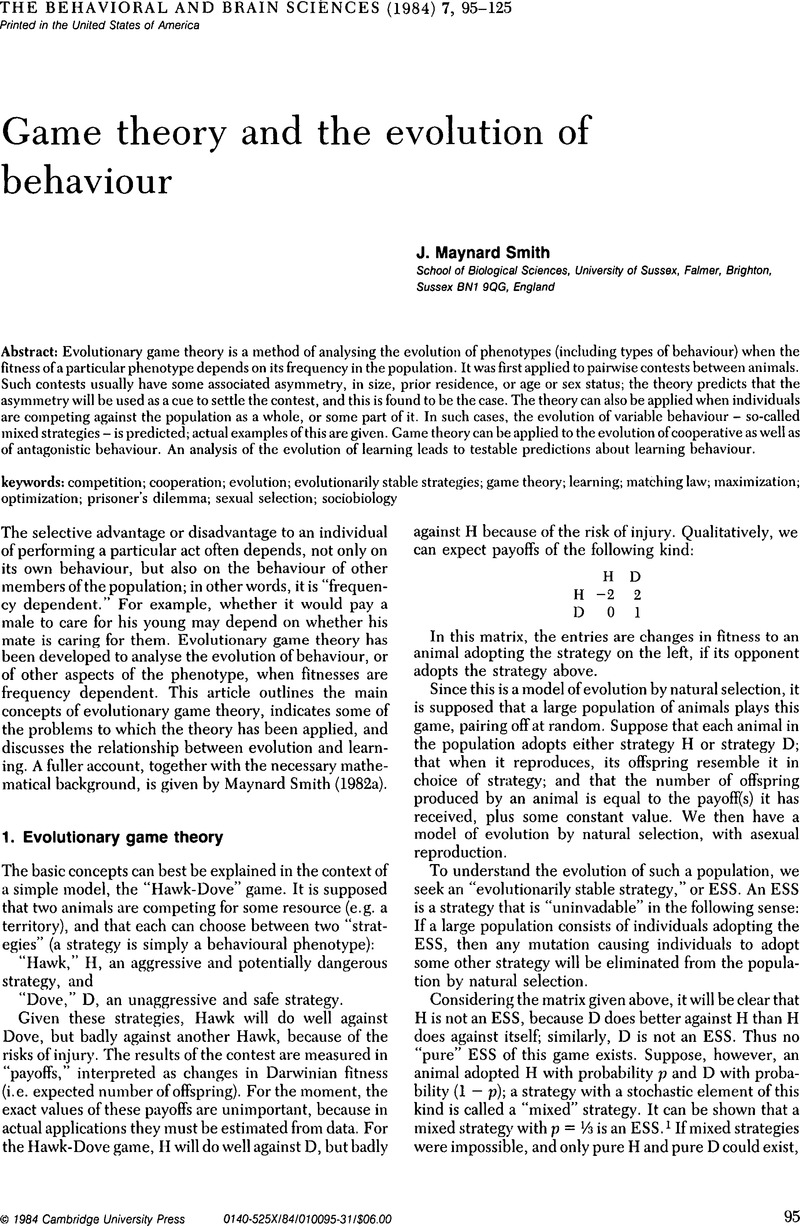Crossref Citations
This article has been cited by the following publications. This list is generated based on data provided by Crossref.
Etienne, Ariane
1985.
La communication.
p.
61.
Stenseth, Nils Chr.
1986.
Complexity, Language, and Life: Mathematical Approaches.
Vol. 16,
Issue. ,
p.
105.
Bond, Alan B.
1989.
Toward a Resolution of the Paradox of Aggressive Displays: II. Behavioral Efference and the Communication of Intentions.
Ethology,
Vol. 81,
Issue. 3,
p.
235.
Bekoff, Marc
and
Scott, Abby C.
1989.
Aggression, Dominance, and Social Organization in Evening Grosbeaks.
Ethology,
Vol. 83,
Issue. 3,
p.
177.
Bond, Alan B.
1989.
Toward a Resolution of the Paradox of Aggressive Displays: I. Optimal Deceit in the Communication of Fighting Ability.
Ethology,
Vol. 81,
Issue. 1,
p.
29.


